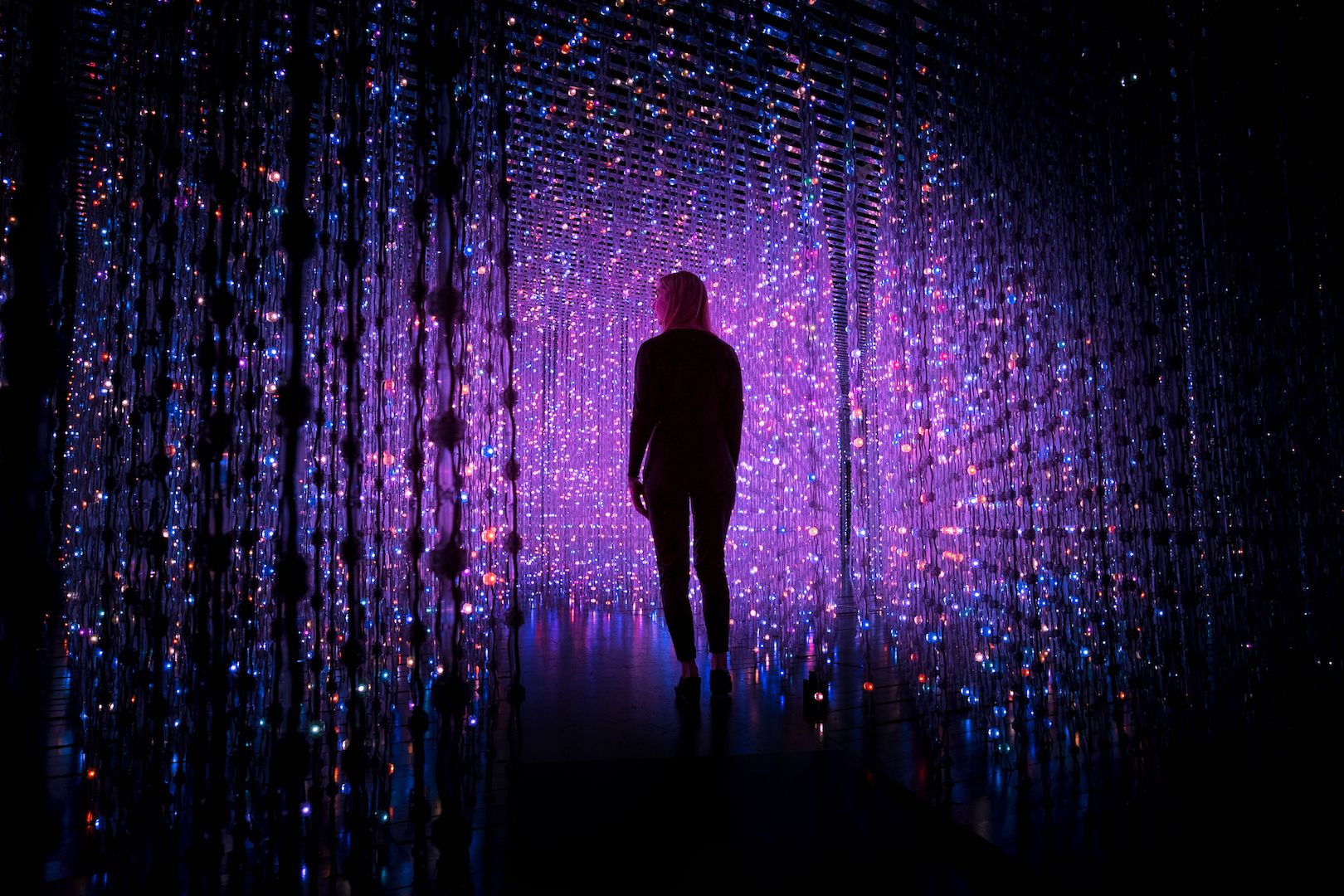Future World is a permanent exhibition in ArtScience Museum that explores the connections between unconfined interactive artworks, inartificial wonders of our world (to some extent the universe as well) and the relative influence of humans in all. Since its opening in 2016, Future World has undergone several transformations. These continual adjustments offer the visitors to experience non-static artworks with uniquely different interaction possibilities with each visit. It is this constantly evolving and highly interactive/fluxional nature of the space that welcomes visitors of all ages.
Future World is organized into four themes that allow different modes of interactions and, most importantly, stories;
City in a Garden
Inspired by the “garden city” vision (and present greening policy) of founding Prime Minister Lee Kuan Yew, this section of the exhibition focuses on urban Singapore’s relation with its flora and fauna.
Interactive artworks in this section dwell on topics of; ephemeral life (Flutter of Butterflies), concentric nature of life and death (Life Survives), harmony of coexistence with the nature (Universe of Water Particles), fostering a strong community (Inverted Globe) and many more. Many of these concepts are presented through cultural metaphors woven with traces of Singapore’s liveliness, energy, vibrance – simply its identity.
What makes this section interesting is the social inclusive nature of the theme and the artworks. One can see many kids playing and running in the area as well as many grown-ups who are taking pictures and being immersed in the unique stories that City in a Garden offers. The mixed presence of artworks with immersive stories that transform mildly with time; along with entertaining pieces with more dramatic and instantaneous results welcome these people of all ages and beliefs.
Sanctuary
The only present artwork in the Sanctuary is the Impermanent Life: People Create Space and Time, at The Confluence of their Spacetime New Space and Time is Born.This space can be regarded as the gatekeeper of tranquility and peace in the exhibition. Inside can be found a surreal imagery that immerses the visitor to a state of relaxation not only by its pervasive size but also by its subtle movements. These movements (or alterations around the space to be more precise) happen as a result of the environment trying to adjust to the present “occupied space”. While the interaction model of this artwork allows an always unique (possibly collective) creation; the gentle and slow-paced mode of interactivity enables this space to be more of an escape from the banality of everyday life to offer a place of reflection and meditation.
Park
Park area is mostly oriented towards people who are down for physical exertion and has excess energy that they can spare for recreation. This area wants the visitors to be dynamic, active and swift. The lively colors, instantaneously responsive audial elements and the spatial orientation of the interactable artworks/games all contribute to this “play”. No wonder so many kids in this section…
Space
Space is arguably the most interesting area in this exhibition. The monumental artwork in this area is called the Crystal Universe. The Space is completely surrounded by interconnected LED lights hanging from the ceiling. To enhance the effect of this unified spatial network, reflective glasses are placed on the floors and on walls of the room. Additionally, this room is darker than previous areas; making any kind of light source more intriguing than ever. As the name implies (with a crystal being something to appreciate and the universe symbolizing the limitless boundaries), a theme of obscurity and vastness of universe is presented in this piece. These themes are communicated through the artworks colossal size in a three-dimensional light space. The controllable digital domain of the artwork allows visitors to form sculptures that expresses “their” universe. While the visitor has the possibility to exhibit many different lights shows through a variety of choices to choose from (one’s phone or the iPad present in the area), the viewer’s position within the artwork also influences how the work is created as well. The immersive nature of this monumental piece along with its highly unique outputs, invites visitors to appreciate the beauty and scale of the universe.

The kind of experience designed here by TeamLab is perhaps only the beginning of the kinds of immersive and interactive experiences designed to engage audiences in public spaces like museums. I think you’ll see this convergence of technology, interaction and immersive experience design and art evolve both in the museum and commercial sectors. How do you see this evolution going in future? How do we see aspects of this even now in different cities?